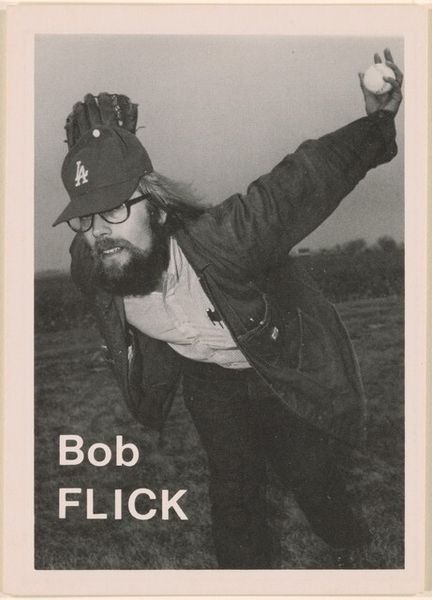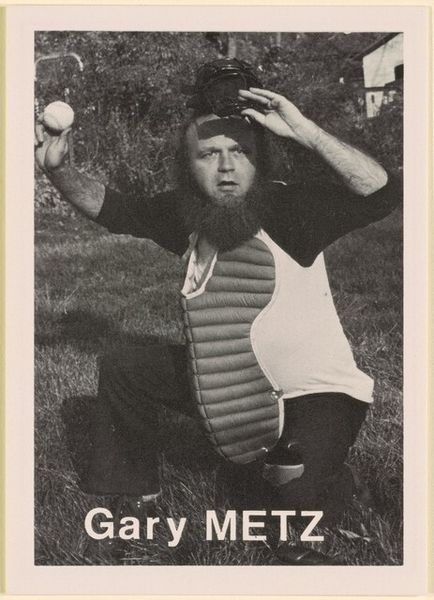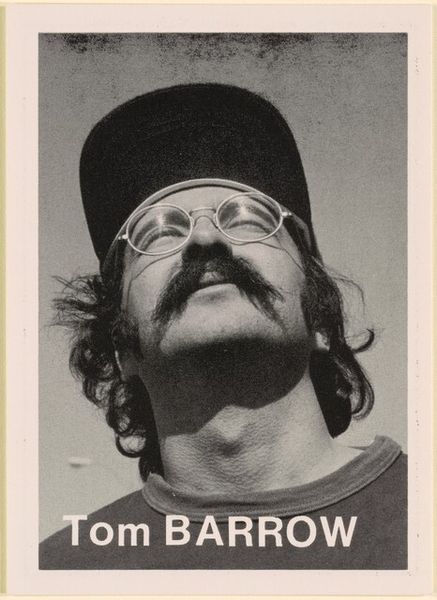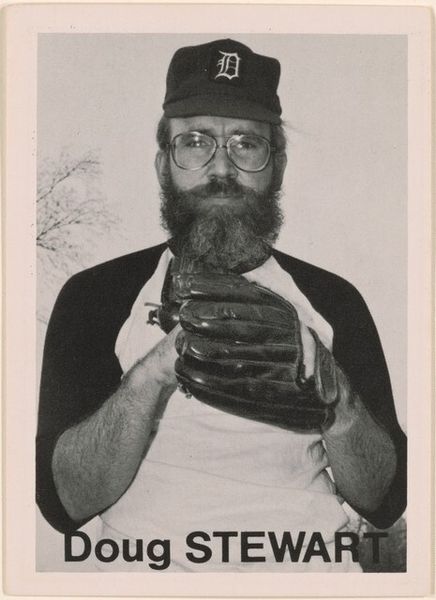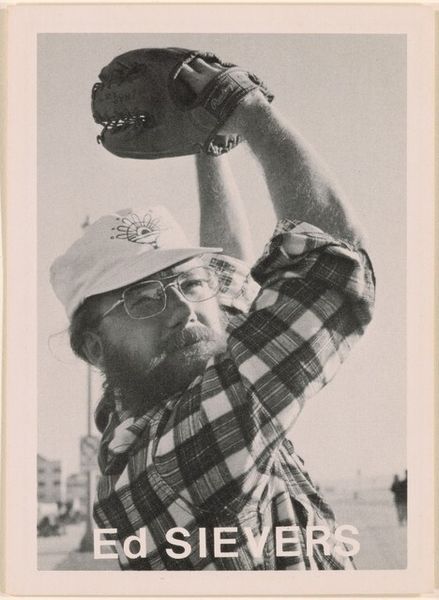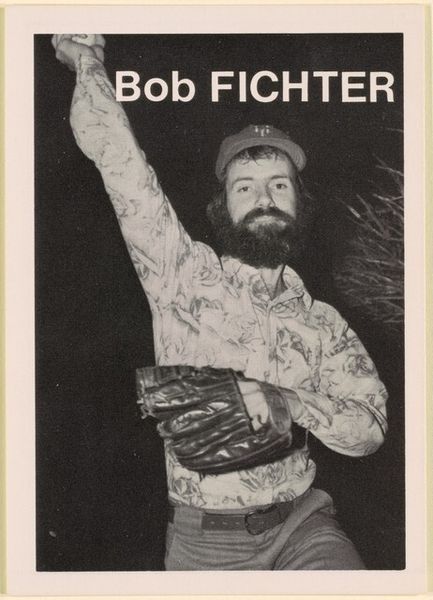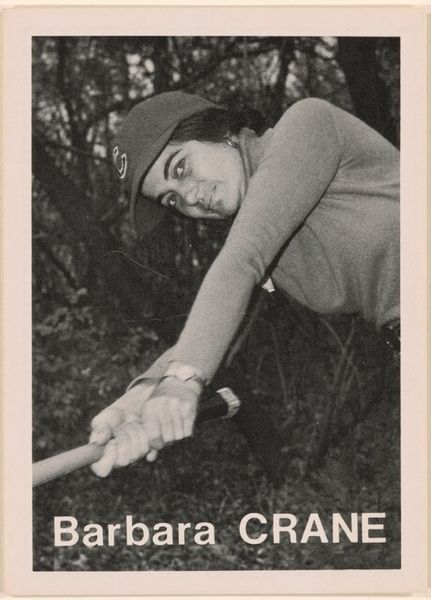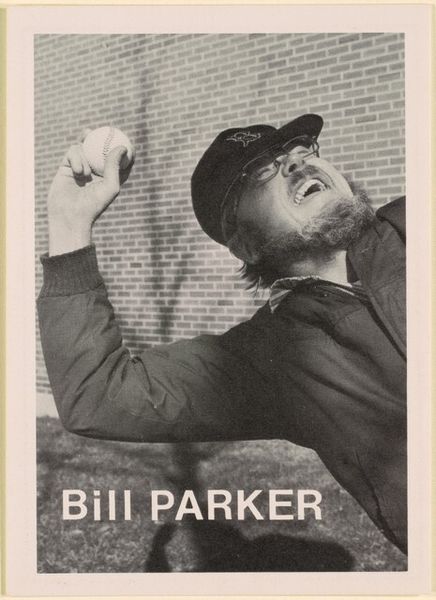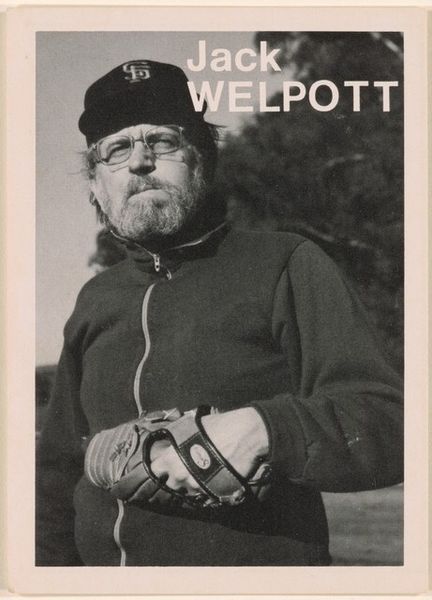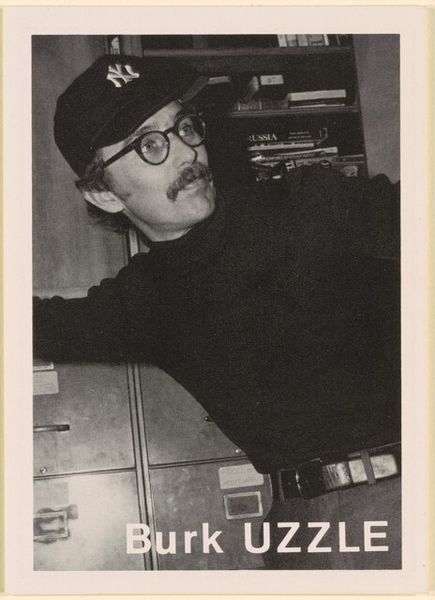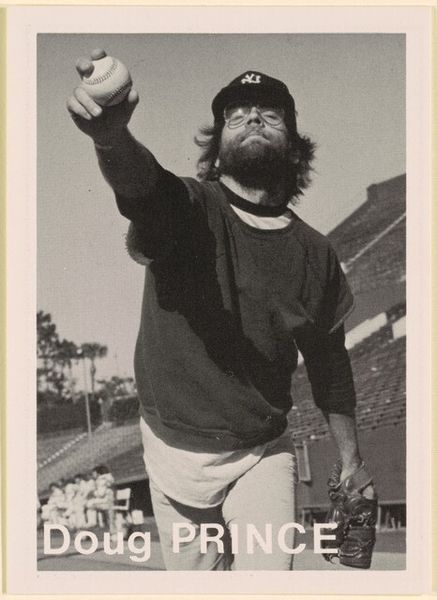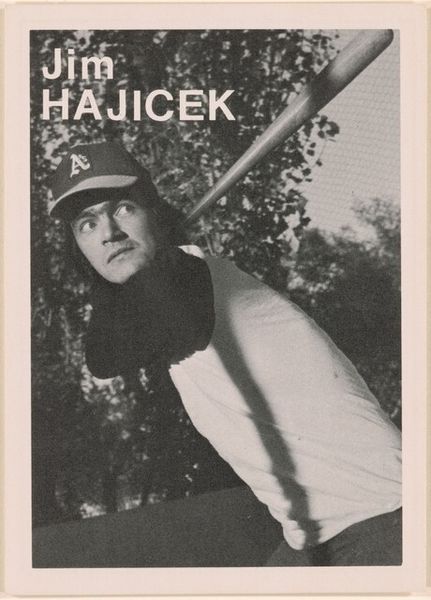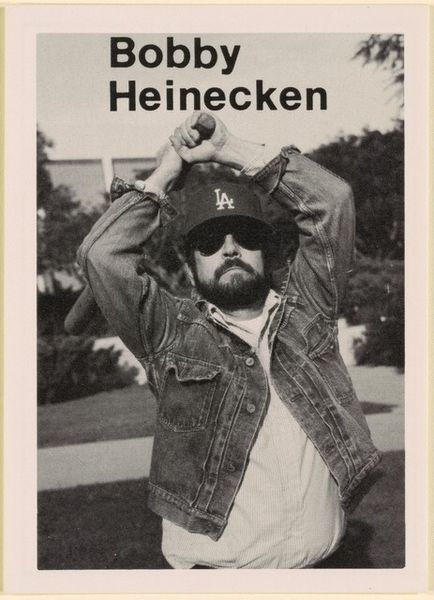
print, photography, gelatin-silver-print
#
portrait
#
print photography
# print
#
street-photography
#
photography
#
historical photography
#
gelatin-silver-print
Dimensions: image: 8 × 5.5 cm (3 1/8 × 2 3/16 in.) sheet: 8.9 × 6.3 cm (3 1/2 × 2 1/2 in.)
Copyright: National Gallery of Art: CC0 1.0
Curator: This gelatin silver print, dating back to 1975, is titled "Chuck Swedlund" and comes to us from the lens of Mike Mandel. Editor: There’s something compelling in its raw quality, wouldn't you say? The composition feels very immediate, almost like a snapshot—but with purpose. You feel the textures too, the grass, the worn leather of the baseball glove. Curator: Indeed. It seems casual, yet this is part of a larger project that examines the visual language of professional baseball cards. Mandel's approach was anything but random, inserting himself and his friends into that pre-existing visual culture. He's leveraging and critiquing this highly mediated world. Editor: Right, and you can see how the act of printing elevates this potentially ephemeral image, granting permanence, giving status, much like a fine art print does. Curator: Exactly! The artist disrupts our expectations, forcing us to question the values we project onto those commercial artifacts, into a social and cultural context of its time. Think about the '70s, a time when societal roles were shifting and institutions were being questioned. Editor: Yes, the act of reproduction itself becomes part of the art-making, disrupting notions of authenticity. And the materials are crucial to its meaning; the photograph isn’t just *of* something, it *is* something, a tangible artifact produced through labor. I wonder who printed this image, for instance, and where? Curator: All of that is tied to how these images circulate. Mandel takes street photography and infuses it with portraiture but redirects its message away from individual skill to systemic operations. We need to see it as a study into what it means to produce images for a culture obsessed with heroes. Editor: The simplicity of the monochrome print emphasizes form and the physicality of the photographic process—all the darkroom processes needed to make a print like this! It transforms a portrait into something that reveals the labour and the intentionality of artistic work. Curator: Precisely, a playful, insightful poke at the culture of celebrity. Editor: It’s making me think about the working class context surrounding baseball. How printing techniques might serve to democratize it and transform it into an artwork! Curator: Fascinating how one image can expose so much about art, culture, and social dynamics. Editor: Yes, and it challenges us to reassess our relationship with materials and production!
Comments
No comments
Be the first to comment and join the conversation on the ultimate creative platform.
